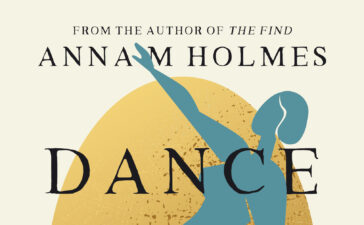reviewed by Gabriela MINDEN
The year is 1875 and the Italian ballerina Giovannina Pitteri takes the stage before a rapturous crowd at London’s Alhambra Palace Theatre. Beyond the wings, where the strains of the orchestra scarcely reach, a newborn is left at the backstage door, a responsibility that a member of the corps de ballet was seemingly unable to shoulder. So begins Anna M. Holmes’s Dance of the Earth, an expansive family saga that unfolds within the protean world of late nineteenth- and early twentieth-century performance.
It is around the abandoned child, christened Rose, that the novel develops. She is taken in by a young seamstress at the Alhambra and grows into a rising star of the late-Victorian music hall ballet. Yet her ascent is soon interrupted by an unexpected pregnancy that results in the birth of twins, Nina and Walter. Separated as infants and brought up in strikingly different environments, they pass their childhoods unaware of each other’s existence. From this premise, Holmes constructs a narrative that is as much about artistic lineage as it is about family inheritance. As a change in circumstances draws Nina and Walter back into the same orbit, they find themselves bound less by blood than by a shared devotion to the period’s revolutionary artistic currents. Before long, Nina has joined the ranks of Serge Diaghilev’s Ballets Russes, while Walter, a pianist with a penchant for Stravinsky, has enrolled at the Royal Academy of Music. Together, their stories trace the social and aesthetic shifts that carried the performing arts from the popular stage to the avant-garde experimentation of early modernism.
Through the eyes of her dual protagonists, Holmes brings to life pivotal moments in dance and music history, nowhere more vividly than in her reimagining of the notorious Parisian première of Le Sacre du printemps, complete with an audience in uproar and Vaslav Nijinsky shouting counts from the wings. Recreating such legendary yet ephemeral events – not to mention animating iconic personalities like Diaghilev – carries inherent risk. Yet Holmes’s research is sound and she weaves historical figures with her fictional characters so skilfully that even those familiar with the history may find themselves surprised at turns they ought to have anticipated. The reveal of Lydia Sokolova, an English Diaghilev ballerina who emerges with a new, requisitely Russian name, is particularly deftly handled.
Some of the novel’s most poignant moments arise when its characters contend not only with the tribulations of the stage, but also with the wider social and political pressures that shaped the early decades of the twentieth century. Alongside her dance career, Nina navigates a relationship that makes her confront racial prejudice and the potential constraints of motherhood. In turn, Walter grapples with lingering trauma from the First World War and a search for belonging in a society that makes little room for queerness. Overall, Dance of the Earth is a moving exploration of an extraordinarily rich yet turbulent time in history, and will resonate strongly with those who believe in the intrinsic value of art.






